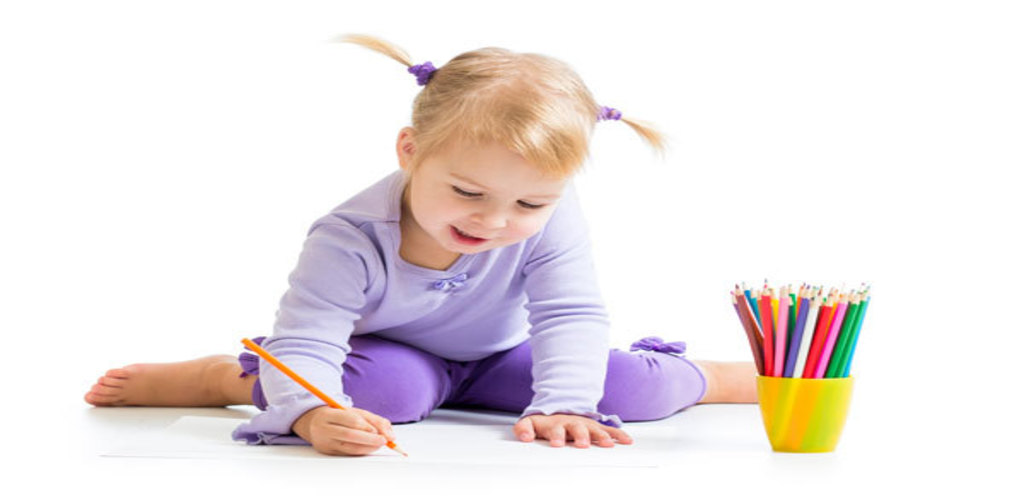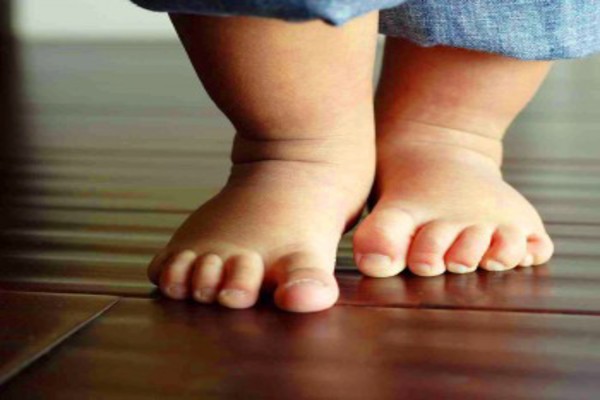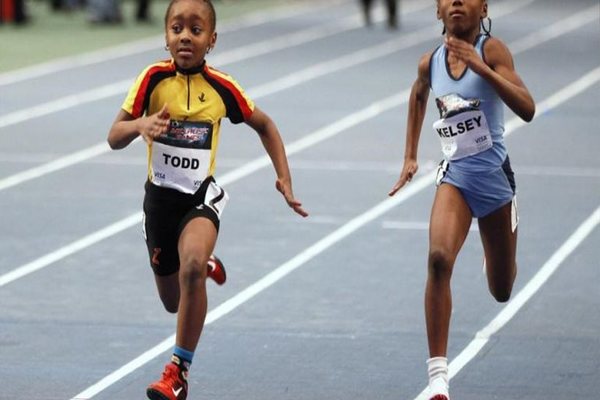Adventures in W-Sitting…

Adventures in W-Sitting…
w-sitting
“W-sitting” is a term used to describe a sitting position in which the child’s bottom is on the floor while their feet are splayed out to the sides – forming a “W” shape with the legs and knees.
W-sitting may seem like a benign position that many children utilize, but it comes with many negative implications.
Chief among these are the fact that W-sitting:
Promotes poor posture
Discourages activation of trunk muscles leading to deficits in balance
Inhibits exploration and movement between positions
Keeps children confined to play only in midline
May lead to hamstring tightness, tibial torsion and hip dislocation
In a W-sitting position, the hips are placed at the extreme limits of internal rotation, predisposing the child to future orthopedic problems. In this abnormal position, the risk of hip dislocation becomes a concern, especially with a diagnosis of hip dysplasia. Pre-existing orthopedic conditions can become exacerbated when major muscle groups are placed in shortened positions for prolonged time. These shortened muscles are at risk for forming contractures, especially the hamstrings, adductors and Achilles tendon.
Postural Control
w-sitting
W-sitting fails to engage trunk and postural muscles and encourages poor alignment of the spine. In a W-sit, the child’s thighs roll inward and pelvis tips back to accommodate, causing the spine to form a c-curve rather than its natural s-shape. Child gets fixed in this position, and it can be difficult to transition into other developmental positions or interact freely with child’s environment.
w-sitting
By changing the sitting position from W-sitting to tailor (as pictured above), the child’s trunk musculature is activated & engaged. The child’s spine is more aligned with better head/neck/shoulder positioning to allow for participation in fine motor activities. There is also less strain on joints of lower extremity with the pelvis in a more neutral position. Child can easily transition out of this position into side sit, quadruped, tall kneel or half kneel.
w-sitting
You can further challenge the child’s postural control and trunk activation by simply placing a dyna disc under their bottom in the tailor sit position. Note the lengthening through the back and neck musculature with the child seated on the dynamic support.
Trunk Strength and Balance
W-sitting compromises balance development. A child who frequently W-sits is not activating trunk musculature to maintain sitting balance and posture. Because W-sitting allows the child to lock into an erect position, the trunk muscles are not challenged and balance reactions are not incorporated into innate movement patterns. As a result, trunk control and balance are slower to develop and delays due to non-use are common. Frequent W-sitters typically lack stability in their trunk and pelvis, relying on this sitting position to maintain their balance against gravity.
Exploration in Play
It is much easier for children who have not yet developed mature balance reactions to W-sit during play, because hips and trunk remain in fixed position without much effort. This static position means that the child no longer has to be concerned with holding themselves up or adjusting their body via weight shifting or trunk rotation. By locking in, the child does not transition between positions as easily and will often stay in W-sit for longer intervals. The W-position discourages the child from crossing midline, an important prerequisite skill required for the appropriate development of various motor and cognitive skills. Instead, the child tends to use the right hand on the right side of body, and the left hand on the left side of the body, disrupting bilateral coordination development.
Treatment Strategies
Prevention is the best method if you can catch the pattern early on. Children build foundational skills, and develop compensatory strategies as needed. Let the child know about and experience alternative sitting positions. Be consistent. When you see the child W-sitting, help to correct it. Occasionally children utilize the W-sitting position when transitioning from creeping on hands and knees to sitting on the floor. From all fours, the child simply parts the knees and plops his or her bottom down between them, resulting in the W-position. To discourage this, we can teach child other more efficient transitional movements to get into sitting.
Experiment with side sitting or gently guiding legs out in front to promote a “long sitting” position. Using verbal cues like “criss cross applesauce” assist with the acquisition of new sitting patterns and include the child as an engaged participant. Once the child has experienced the alternative positions, give him or her opportunities to participate in active play scenarios to gain confidence and comfort in these more developmentally appropriate seated postures.
Alternative Positions
1. Tailor Sit aka “Criss Cross Apple Sauce” or “Pretzel Pose”
w-sitting
The pretzel pose is truly the opposite of w-sitting. It allows for external rotation of hips and knees, which places these joints in more optimal positioning for proper alignment and motor development.
crossing midline
Tailor sitting allows for a great deal of opportunities for trunk strengthening and postural control. It also encourages more active play, crossing midline and transitioning in and out of positions with greater ease.
2. Butterfly Pose
w-sitting
The butterfly pose is similar to the pretzel, but allows child deeper stretch of hip adductors. It also creates a more stable base of support for sitting.
3. Long Sit aka “Letter L”
w-sitting
In this position the child sits on his or her bottom, with their legs extended straight out in front. This position offers a great challenge to both trunk and postural activation. It also allows for increased trunk rotation which target the oblique abdominal muscles. The long sitting position can be utilized to encourage hamstring flexibility as well, which occasionally become shortened over time for children who favor w-sitting.
4. Side Sitting aka “Letter Z”
side sit
This position allows child to incorporate different stabilization tactics utilizing upper extremity weight bearing and helping with transitions in and out of sitting. Be mindful of alternating sides during side sit, so that child develops trunk control and balance reactions in both directions.
5. Heel Sitting
w-sitting
In this position the child is still sitting between his feet, but the feet are pointed straight back, toes down, shins in close to his thighs, which no longer roll inward. This reduces the strain on child’s ankles, knees and hips allows the pelvis to come up into a neutral position.
w-sitting
It is also a more functional transitional play position. Child can easily rise from heel sit to tall kneel or quadruped to interact with environment.
6. Tall Kneel
w-sittingw-sitting
In this position, the child weight bears on bent knees with extended hips and trunk, maintaining an erect upper body. This position maximizes strengthening of the trunk against gravity, as well as promotes proper alignment of lower extremity, pelvis, hip and knee joints.
w-sitting
We can work in tall kneeling at support surfaces, or as child gains more trunk strength & stability we can encourage tall kneeling without support for additional challenge!
7. Prone Position
seating options
Tummy time is not just limited to the little ones! Prone position is a great way to stretch hip flexors, encourage upper body weight bearing, increase shoulder stability and strength, and develop proximal to distal control.
8. Sitting on low stool/chair with Optimal Positioning
w-sit
By ensuring that feet are flat on support surface, with ankles, knees and hips at 90 degree angles we are providing child with an aligned and efficient base of support. We love the cube chair as a sitting surface, offering different height options for the child as they grow!
9. Sitting on Foam Roller
w-sitting w-sitting
This is a great alternative sitting position to address trunk strength, dynamic sitting balance and postural control. The foam roller allows child to maintain feet flat on support surface (as pictured above) to promote more efficient and aligned posture! We love to use the cube chair as our “table” allowing the child to freely engage in activities with both hands.
10. Sitting on Peanut Ball
sitting
Similar to the foam roller, find the peanut ball size which allows for optimal posture with feet flat on floor, ankles, knees and hips at 90 degree angle. Now the upper body is free to reach, grasp & manipulate objects!
Children learn through interactions with their environment. W-sitting inhibits much of that exploration, discouraging integration of balance reactions, sensory input and muscle activation. For a child to truly enjoy their “Adventures in Sitting”, lets take the W out of sitting once and for all!
Πρόσφατα Άρθρα

Εγκεφαλική παράλυση
Η εγκεφαλική παράλυση (cerebral palsy, CP) είναι η κύρια αιτία της παιδικής αναπηρίας.
Η εγκεφαλική παράλυση δεν είναι νόσος αλλά ένα σύνθετο σύμπτωμα.
Αποτελεί έναν όρο ‘ομπρ...

Η μυική δύναμη κατά την εφηβεία «όπλο» κατά της καρδιοπάθειας και του διαβήτη
Η μυική δύναμη κατά την εφηβεία «όπλο» κατά της καρδιοπάθειας και του διαβήτη
Η μυική δύναμη ενός εφήβου αποτελεί παράγοντα προστασίας κατά της καρδιοπάθειας και του διαβήτη αργότερα στη...

Σωματική άσκηση σε παιδιά με ειδικές ανάγκες
Ο ρόλος της σωματικής άσκησης στη ζωή του παιδιού είναι ιδιαίτερα σημαντικός και αναγκαίος. Εφοδιάζει το παιδί με ικανότητες σωματικές και κινητικές που του είναι απαραίτητες για την καθημερινή λει...
